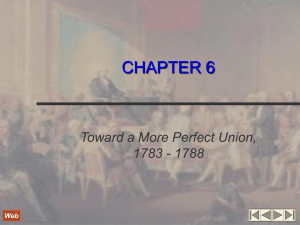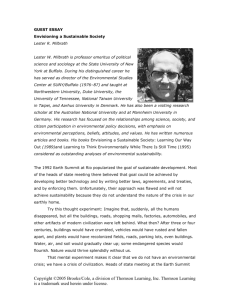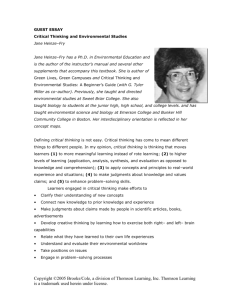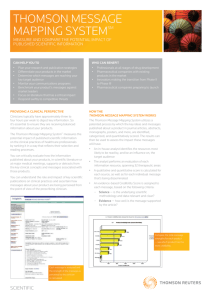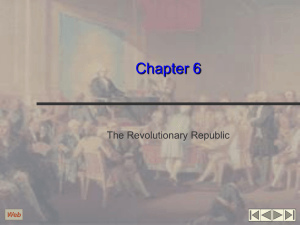TYPES OF SERVICE FAILURES
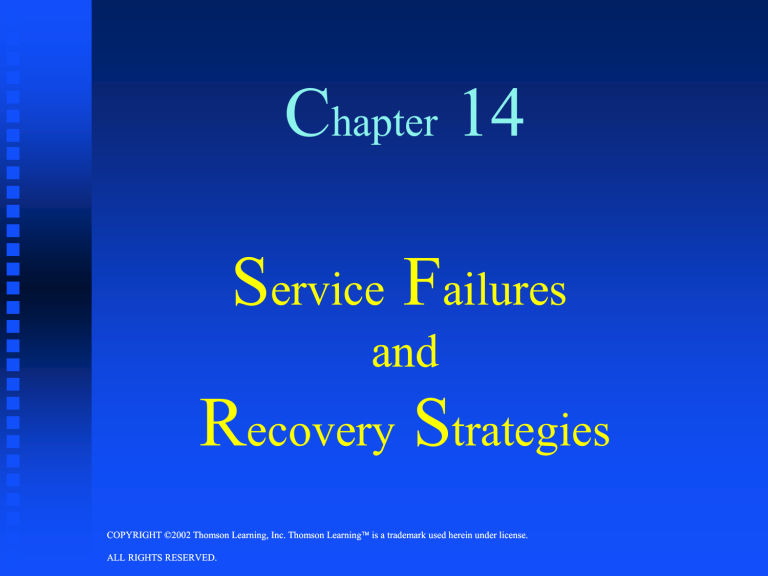
C
hapter
14
S
ervice
F
ailures and
R
ecovery
S
trategies
COPYRIGHT ©2002 Thomson Learning, Inc. Thomson Learning is a trademark used herein under license.
Figure 14.1 Types of Service Failures
Yes
Group 1
Nature of failure?
Unavailable
Slow
Other failures
Group 1A
Group 1B
Group 1C
Total sample
Is there a service delivery system failure?
Yes
Group 2
Nature of requests/ need?
No
Is there an implicit/ explicit request for accomodation
No
Is there an
Unpromoted
/ unsolicited action by employee?
Yes Group 3
No
Nature of employee action?
“Special needs”
Customer preference
Group 2B
Customer error
Group 2A
Group 2C
Disruptive others
Group 2D
Level of attention
Group 3A
Unusual action
Group 3B
Cultural norms
Group 3C
Gestalt
Group 3D
Adverse conditions
Group 3E
Source: Mary Jo Bitner, Bernard H. Booms, and Mary Stanfield Tetreault, “The Service Encounter:
Diagnosing Favorable and Unfavorable Incidents,” Journal of Marketing (January 1990, pp. 71-84.
COPYRIGHT ©2002 Thomson Learning, Inc. Thomson Learning is a trademark used herein under license.
ALL RIGHTS RESERVED.
TYPES OF SERVICE FAILURES
Group 1 Failures
Core service failures
slow service
unavailable service
other core service failures
COPYRIGHT ©2002 Thomson Learning, Inc. Thomson Learning is a trademark used herein under license.
ALL RIGHTS RESERVED.
TYPES OF SERVICE FAILURES
Group 2 Failures
Responses to implicit/explicit requests
special needs
customer preferences
customer error
disruptive others
COPYRIGHT ©2002 Thomson Learning, Inc. Thomson Learning is a trademark used herein under license.
ALL RIGHTS RESERVED.
TYPES OF SERVICE FAILURES
Group 3 Failures
Unprompted/Unsolicited employee actions
level of attention
unusual action
cultural norms
gestalt
adverse conditions
COPYRIGHT ©2002 Thomson Learning, Inc. Thomson Learning is a trademark used herein under license.
ALL RIGHTS RESERVED.
TYPES OF SERVICE FAILURES
(new category)
Group 4 Failures (Employee-reported incidents)
Problematic customer behavior
drunkenness
verbal and physical abuse
breaking company policies or laws
uncooperative customers
COPYRIGHT ©2002 Thomson Learning, Inc. Thomson Learning is a trademark used herein under license.
ALL RIGHTS RESERVED.
TYPES OF COMPLAINTS
Instrumental
expressed for the purpose of altering an undesirable state of affairs
Noninstrumental
expressed without the expectation that an undesirable state will be altered
COPYRIGHT ©2002 Thomson Learning, Inc. Thomson Learning is a trademark used herein under license.
ALL RIGHTS RESERVED.
TYPES OF COMPLAINTS
Ostensive
outer-directed complaints
Reflexive
Inner-directed complaints
COPYRIGHT ©2002 Thomson Learning, Inc. Thomson Learning is a trademark used herein under license.
ALL RIGHTS RESERVED.
WHY DO CUSTOMERS COMPLAIN?
Correct the problem
Emotional release from frustration
Regain some measure of control by spreading negative w-o-m
Solicit sympathy
Test for consensus
Create an impression of being more intelligent and discerning
COPYRIGHT ©2002 Thomson Learning, Inc. Thomson Learning is a trademark used herein under license.
ALL RIGHTS RESERVED.
WHY DON’T CUSTOMERS COMPLAIN?
Don’t know who to complain to
Don’t think it will do any good
May doubt their own subjective evaluation
May accept part of the blame
May want to avoid confrontation
May lack expertise
COPYRIGHT ©2002 Thomson Learning, Inc. Thomson Learning is a trademark used herein under license.
ALL RIGHTS RESERVED.
Voice
COMPLAINING OUTCOMES
High => store manager
Medium => sales clerk
Low => no one associated with the store
Exit
High => never purchases again
Medium => only purchases if other alternatives are not available
Low => continues to shop as usual
COPYRIGHT ©2002 Thomson Learning, Inc. Thomson Learning is a trademark used herein under license.
ALL RIGHTS RESERVED.
COMPLAINING OUTCOMES
Retaliation
High => tells lots of people and attempts to physically damage the store
Medium => tells a few people and created minor inconveniences
Low => does not retaliate at all
COPYRIGHT ©2002 Thomson Learning, Inc. Thomson Learning is a trademark used herein under license.
ALL RIGHTS RESERVED.
TRENDS IN COMPLAINT RESOLUTION
Complaints are more likely to be acted upon when:
complaints are made to managers
formally designated complaint handlers are involved
someone with a personal tie to the company is involved
the complaint is about the quality of service as opposed to an employee’s personality
COPYRIGHT ©2002 Thomson Learning, Inc. Thomson Learning is a trademark used herein under license.
ALL RIGHTS RESERVED.
SERVICE RECOVERY
Service recovery paradox
customers are likely to evaluate a firm higher if a mistake is made and corrected than had the service been delivered correctly the first time.
COPYRIGHT ©2002 Thomson Learning, Inc. Thomson Learning is a trademark used herein under license.
ALL RIGHTS RESERVED.
DEVELOPING A SERVICE RECOVERY
PROGRAM
Measure the costs
calculate the lifetime value of a customer
Actively encourage complaints
Anticipate needs for recovery
Respond quickly
Train employees
Empower the front-line
Close the loop
COPYRIGHT ©2002 Thomson Learning, Inc. Thomson Learning is a trademark used herein under license.
ALL RIGHTS RESERVED.
SERVICE RECOVERY EVALUATION
Perceived justice needs--based on equity theory which weighs outcomes versus inputs
distributive justice
outcomes
procedural justice
process
interactional justice
the human content of the recovery process
COPYRIGHT ©2002 Thomson Learning, Inc. Thomson Learning is a trademark used herein under license.
ALL RIGHTS RESERVED.
TYPICAL RECOVERY STRATEGIES
(distributive justice outcomes)
Compensatory strategies
gratis
discounts
upgrades
free ancillary service
Refunds
COPYRIGHT ©2002 Thomson Learning, Inc. Thomson Learning is a trademark used herein under license.
ALL RIGHTS RESERVED.
TYPICAL RECOVERY STRATEGIES
(distributive justice outcomes)
Corrections
Replacement strategies
Apology
Disregard
COPYRIGHT ©2002 Thomson Learning, Inc. Thomson Learning is a trademark used herein under license.
ALL RIGHTS RESERVED.
RECOVERY TACTICS
Poor responses
Fail to recognize the seriousness of the problem
Fail to adequately accommodate the customer
Act as though nothing is wrong
Fail to explain why the problem occurred
Leave the customer to solve the problem on his or her own
Promise to do something and don’t follow through
COPYRIGHT ©2002 Thomson Learning, Inc. Thomson Learning is a trademark used herein under license.
ALL RIGHTS RESERVED.
SERVICE FAILURES
& RECOVERY STRATEGIES:
THE RESTAURANT INDUSTRY
COPYRIGHT ©2002 Thomson Learning, Inc. Thomson Learning is a trademark used herein under license.
ALL RIGHTS RESERVED.
SERVICE FAILURES:
THE RESTAURANT INDUSTRY
Group 1 failure categories (44.4%)
Product defects (20.9%)
food was described as cold, soggy, raw, burnt, spoiled, or containing inanimate objects such as hair, glass, bandages, bag ties, and cardboard.
Slow/unavailable service (17.9%)
waiting excessively, not being able to find assistance
COPYRIGHT ©2002 Thomson Learning, Inc. Thomson Learning is a trademark used herein under license.
ALL RIGHTS RESERVED.
SERVICE FAILURES:
THE RESTAURANT INDUSTRY
Facility problems (3.2%)
cleanliness issues such as bad smells, dirty utensils, and animate objects (e.g., insects) found on the table or in the food
Unclear policies (1.6%)
policies that were perceived as unfair by the customer, such as coupon redemption, or forms of payment
Out-of-stock conditions (.8%)
inadequate supply of menu items
COPYRIGHT ©2002 Thomson Learning, Inc. Thomson Learning is a trademark used herein under license.
ALL RIGHTS RESERVED.
SERVICE FAILURES:
THE RESTAURANT INDUSTRY
Group 2 failure categories (18.4%)
food not cooked to order (15.0%)
requested food be prepared in a particular manner and restaurant failed to meet request
seating problems (3.4%)
seating nonsmokers in smoking section and vice versa
lost or disregarded reservations
requests for special tables that were denied
seating among unruly and disruptive customers
COPYRIGHT ©2002 Thomson Learning, Inc. Thomson Learning is a trademark used herein under license.
ALL RIGHTS RESERVED.
SERVICE FAILURES:
THE RESTAURANT INDUSTRY
Group 3 failure categories (37.2%)
inappropriate employee behavior (15.2%)
rudeness, inappropriate verbal exchanges, and poor attitudes
wrong Orders (12.6%)
delivery of the incorrect food item, either to the table, or in the case of fast food, in packaging so that the mistake was not discovered until the customer had left the premises
COPYRIGHT ©2002 Thomson Learning, Inc. Thomson Learning is a trademark used herein under license.
ALL RIGHTS RESERVED.
SERVICE FAILURES:
THE RESTAURANT INDUSTRY
Group 3 failure categories (37.2%)
lost orders (7.5%)
situations in which the customer’s order was lost and never fulfilled
mischarged (1.9%)
being charged for items that were never sent, being charged incorrect prices for items that were ordered, and providing incorrect change
COPYRIGHT ©2002 Thomson Learning, Inc. Thomson Learning is a trademark used herein under license.
ALL RIGHTS RESERVED.
SERVICE FAILURES:
THE RESTAURANT INDUSTRY
Recovery Strategies (frequency, retention)
Replacement (33.4%, 80.2%)
Free Food (23.5%, 89.0%)
Nothing (21.3%, 51.3%)
Apology (7.8%, 71.4%)
Correction (5.7%, 80.0%)
Discount (4.3%, 87.5%)
Manager Intervention (2.7%, 88.8%)
Coupon (1.3%, 80.0)%
COPYRIGHT ©2002 Thomson Learning, Inc. Thomson Learning is a trademark used herein under license.
ALL RIGHTS RESERVED.
